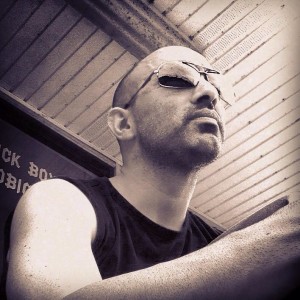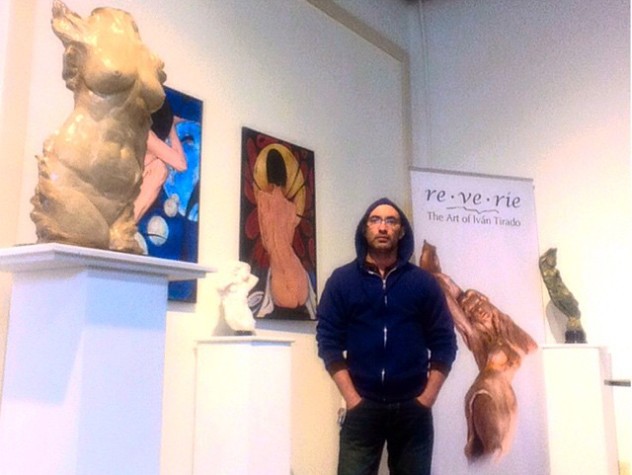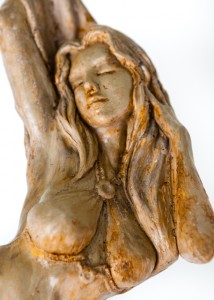The Three Questions
 Now that May is over and June is here the excitement of a new adventure grows. As I get ready for training for my new job as part-time faculty at Quinnipiac University, I’ve been going over the textbook for the Inquiry Based Learning course I’ll be teaching A More Beautiful Question by Warren Berger. It is a very interesting book which explores the habit of questioning. It presents three questions shaping the process of change and applicable to many areas of life. The three questions are:
Now that May is over and June is here the excitement of a new adventure grows. As I get ready for training for my new job as part-time faculty at Quinnipiac University, I’ve been going over the textbook for the Inquiry Based Learning course I’ll be teaching A More Beautiful Question by Warren Berger. It is a very interesting book which explores the habit of questioning. It presents three questions shaping the process of change and applicable to many areas of life. The three questions are:
- Why?
- What if?
- How?
The first question “Why?” establishes conscience of the status quo and questions it. We get used to the status quo and continue living in it without taking time to ask ourselves “why are we doing this?” or “why are we doing this way?”. We can question the question itself. Without questioning the status quo we can’t perceive the possibilities of change and there is where the second question comes into place. “What if?” paints a picture of a desired scenario. “What if things were different?” “What if we could change what we have now to what we need?” We can think of opportunities for change with that question. Of course, we need a bridge between the current and the preferred scenario.
We can’t stop at dreaming of a different situation. It is necessary to move into action. Many won’t get pass the “What if?” but some will. “How?” is the process of connecting the “Why?” and the “What if?”. Here is where change happens. It is a process and it requires effort and hard work. That is why many don’t cross the bridge. Those who dare to cross the bridge achieve the realization of their dream.
June is here with new opportunities to question and start crossing the bridge. We get that opportunity each day. I want to invite you to give yourself a chance and try something different. Check out the sculpting and painting parties. It will help you disconnect to connect back and change your perspective on challenge and these parties are a lot of fun too. I want to invite you to also join the conversation Wednesday, June 3 for a live chat broadcast of the Creative Chat Cafe. You might find something inspiring and motivating to make your way across the bridge.

 The exhibit as featured artist at The Gallery at Elemar came to a close. I had to remove my art from the stage where the featured artist exhibits the work. It is someone else’s time to use the stage. My work was on stage since November 2014. I still show my work there. As I was moving stuff around and trying to figure out my exhibit area I was thinking about Pablo Picasso and his quote, “Give me a museum and I’ll fill it.” I can fill one too. Maybe a museum is too big for me but I’m sure I can fill a gallery or a studio.
The exhibit as featured artist at The Gallery at Elemar came to a close. I had to remove my art from the stage where the featured artist exhibits the work. It is someone else’s time to use the stage. My work was on stage since November 2014. I still show my work there. As I was moving stuff around and trying to figure out my exhibit area I was thinking about Pablo Picasso and his quote, “Give me a museum and I’ll fill it.” I can fill one too. Maybe a museum is too big for me but I’m sure I can fill a gallery or a studio. I’ve been thinking about a figure study workshop and open figure drawing nights for a while. That I would love to do on a regular basis. Also, the studio space could be great for all the private classes. I could also hold open studios and show openings. It would be amazing to be able to present the new collection along with the book in a place like that. There is so much to dream about. That is the first step to make it a reality. Dream on, my friend.
I’ve been thinking about a figure study workshop and open figure drawing nights for a while. That I would love to do on a regular basis. Also, the studio space could be great for all the private classes. I could also hold open studios and show openings. It would be amazing to be able to present the new collection along with the book in a place like that. There is so much to dream about. That is the first step to make it a reality. Dream on, my friend.
Too Old To Dream
Sometimes I feel too old to dream anymore
I guess it took me long enough to get back to writing for this blog. It is time to get back at it. I hope the title stirred up your curiosity. Sometimes I feel too old to dream anymore. No, I didn’t lose my edge, or neither I think that dreams are not important. I will always be a dreamer. However, it is time to take action and make those dreams happen. I’ve been trying to understand my path in life, the reasons for my experience, academics, my art, my skills, my weaknesses, my mistakes, those apparent failures, and moreover, the dreams I have for my life. I discovered soon enough that all of it was never about me.
My wife and I have been reading, seeking information, reaching out to organizations, and talking to people about human trafficking, and more specifically, domestic sex trafficking victims. While this is not a foreign subject for us, it was until recently that our hearts began burning for these victims, their trauma, their restoration, and the future they can have through freedom and healing. I’ve been assessing the tools I have and how these can be used for this purpose. I have to start with what I have no matter how little and insignificant it may look. To be specific, I have on one hand my academic preparation, teaching and research experience, and on the other hand, art. How do these two connect?
I shared before about social learning theory and how it helps to understand human behavior and antecedents to develop strategies for teaching and learning more effectively. In the past year or so, I’ve been contributing to some expansion of the theory not only in the complexity of factors of causation, but also in the application of the theory beyond the realm of learning. Adding the affective and the spiritual domains, and making the physical domain broader than just psychomotor skills, along with how the interactions of factors produce more than just self-efficacy and agency, are some of the things I’ve been working on. Also, I’ve been working on understanding how this theory is useful for trauma treatment. Moreover, I’ve been understanding in deeper ways how the benefits of the creative process are a tool to facilitate the healing process. I know it is a lot to grasp in a short post. I am putting together a research article on it.
This effort is just one piece of the puzzle. My wife is working on her piece of the puzzle too. She is working on the physical aspects of trauma through a holistic health approach. At the same time, she is connecting to mental health professionals to focus in the counseling and support aspects. All together is forming a inter-disciplinary and inter-professional holistic approach that focuses on the person being restored. Better yet, with every passing day, this is no longer a dream. The pieces are coming together to become a reality. Life is about to take a turn in a direction that is still unknown to us, and more importantly, to the people this is about.